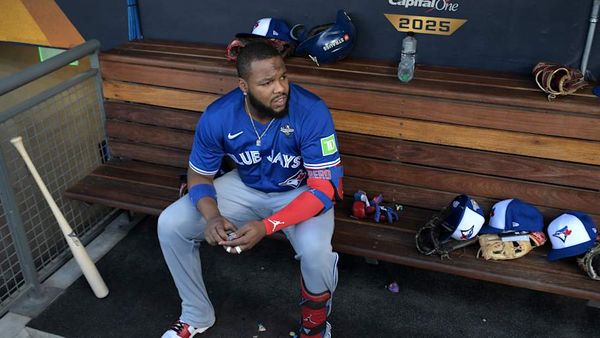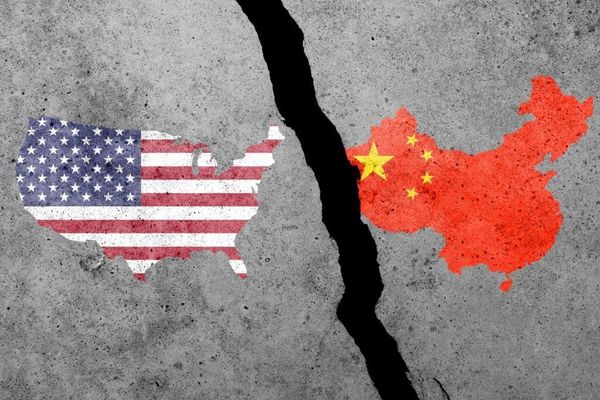
If you walk into a typical Party City store today, you’ll find anything but a party atmosphere—and it’s easy to see why the retailer is going out of business. Recent visitors to the location on Manhattan’s affluent Upper West Side, for example, could stroll across dull linoleum floors under harsh neon lighting that gave dental-office vibes much more than a dancefloor feel. And there was nothing special to celebrate in the aisles of drab merchandise: just paper plates, table covers, greeting cards and other party supplies that a shopper could quite easily find at Amazon, Walmart, or even dollar stores.
In December, Party City filed for Chapter 11 bankruptcy protection—for the second time in two years—and announced it would wind down its business and close its stores after almost four decades. The lamentations of nostalgic shoppers who once loved Party City filled social media, but many admitted they had stopped patronizing it years ago. And few if any retail insiders were surprised.
If anything, Party City epitomizes trends that have brought down dozens of chains since the beginning of 2024 and could drive many more to bankruptcy in 2025. It struggled to manage the debt load that it inherited from a lengthy period of ownership by private equity. Just as important (and in part because of that debt), Party City failed to make the kinds of investments—especially in technology—that retailers must make to woo consumers whose shopping habits have changed dramatically since the COVID pandemic.
The 800-store chain is expected to wind down operations by late February. It was hardly the only national retailer to find itself out of favor with shoppers: A number of others sought bankruptcy protection in 2024 to either cleanse their balance sheets or simply went out of business. They include The Container Store and 99 Cents Only, as well as restaurant chains Red Lobster (which exited bankruptcy protection in September) and TGI Friday’s—all of which, like Party City, were currently or formerly private equity-owned companies. But others that were never PE-owned also struggled: Big Lots went bankrupt, and retailers as varied as CVS Health, Walgreens, Family Tree, and Macy’s have all closed stores and posted grim financial results.
One could be forgiven for thinking we might be enduring another so-called “retail apocalypse.” That term was coined for the major shakeout among national chains in the 2010s, when countless bankruptcies and store-closing campaigns affected companies big (Toys ‘R’ Us, Sears) and less big (Aéropostale, Men’s Wearhouse).
Indeed, research and data firm Coresight Research recently counted 50 retail brick-and mortar bankruptcies in 2024, or roughly double the tally the previous year. What’s more, Coresight said 7,300 stores in the U.S. had closed last year, up 57% from 2023.
We are far from the peaks of that big retail shakeout (a record 9,832 stores closed in 2019, and nearly as many in 2020). But what the Party City failure and other bankruptcies show us is how much less room for error specialized retailers have in the higher-inflation, post-COVID environment.
Consumers are more price-conscious than they’ve been in years; the pandemic, meanwhile, has made them more inclined to consolidate their shopping to visit as few stores as efficiently as possible. Woe to the shabby retailers who can’t keep those customers satisfied with appealing stores, good websites, and smart inventory and pricing tech.
“We’re in a world of haves and have-nots in the retail sector,” says Charlie O’Shea, a longtime Moody’s analyst who now heads his own firm, O’Shea Advisors. And the gap between the two is widening.
Party City declined to comment for this story.
High debt, COVID, and a helium shortage doom the chain
Party City was born in 1986 when Steve Mandell, a retail sales consultant, was making queries for clients that were looking to sell party supplies. In the course of his research, he realized there was no one major retailer for the category; instead, many general merchandise retailers had small sections for party items like napkins and decorations.
Seeing an opportunity, Mandell opened a store in East Hanover, N.J., and called it Party City. It was meant to be to party supplies what Barnes & Noble was to books or Best Buy to electronics, and it enjoyed many years of success.
In 2012, private equity firm Thomas H. Lee Partners bought Party City in a leveraged buyout, taking it to the stock market three years later. Party City’s debt load from the LBO was $2.2 billion, an amount roughly on par with its annual revenue—and an enormous amount for such a modestly sized chain. “You can’t outrun debt,” quips O’Shea.
As long as Party City was growing, the debt load was manageable. The company hit its high watermark in 2018, with revenue of $2.43 billion. Then two “black swan” events hit the retailer. Filling balloons with helium was one of the company’s most profitable services, and something consumers couldn’t do on Amazon; but in 2019, a nationwide helium shortage devastated that business. A year later, COVID happened. From one day to the next, sales plunged as Americans on lockdown suspended their social gatherings.

All along, meanwhile, interest payments from the LBO—which amounted to $102 million in 2022, the chain’s last full year before Chapter 11—had diverted money away from Party City’s investment in its stores, which became ever more unappealing and understaffed. The debt also undermined efforts to improve its e-commerce. “If you had a lousy online presence, you couldn’t hide from that during COVID,” says O’Shea.
By early 2023, facing a major payment on a long-term liability, Party City was forced to file for Chapter 11, erasing $1 billion in debt. But it still had $800 million in debt when it emerged from bankruptcy protection nine months later, and it never offered a convincing plan to turn things around and spruce up stores. Right before last Christmas, its CEO of only four months announced that Party City would start to wind down.
“Party City had a super defensible moat, but they blew it,” says Joel Bines, managing partner at consultancy Spruce Advisory. “They did that by disappointing the customer, by not getting ahead of their balance sheet and by not changing their business model for what today’s consumers want.”
Private equity is often the fall guy when retailers they own or have owned fail. The bankruptcies of Toys 'R' Us and Neiman Marcus, for example, have been blamed with reason on PE owners who saddled them with mountains of debt.
But there are plenty of PE-backed retailers, including BJ’s Wholesale Club and Dollar General, that have thrived. They’ve done so by staying focused on consumers and their changing habits—and in those arenas, you have to spend money to make money.
Retail giants consolidate their hold
In an inflationary environment where lower-income shoppers are constantly seeking deals, it’s hard to fathom that retailers like Big Lots, which focuses on closeout and liquidation sales, and 99 Cents Only, a deep discounter, have also sought bankruptcy protection.
But those retailers, like Party City, have failed to keep up with technology that could keep consumers loyal, including enhanced inventory management, dynamic pricing tools, and deep consumer analytics. The respected retail newsletter The Robin Report recently pinned the blame for 99 Cents Only’s disappearance on that failure to invest. As rivals deployed the tech that the chain lacked, they were able to know what prices consumers really were willing to pay, and to deliver personalized offers, siphoning away many 99 Cents Only customers.

Meanwhile, the largest retailers in the U.S. have been making those kinds of investments for years, helping them to slowly consolidating their collective lead over small and mid-sized chains. As COVID raged and people wanted to minimize time in stores, even more people flocked to Walmart or Costco Wholesale to do all their shopping under one roof or in bulk (that is, when they weren’t simply shopping online).
A recent Wall Street Journal analysis crunched government numbers and found that Costco, Amazon and Walmart represented a combined 17% of total U.S. retail sales last year, compared to 11% in 2014. Walmart alone saw its annual sales increase by $162 billion, or the equivalent of six Macy’s, between fiscal 2014 and fiscal 2024.
The Big Three have helped their own causes too with effective loyalty programs and big tech investments. They continue to grow far faster than retail overall and have more than kept the market share gains they captured with the pandemic surge.
Last quarter, Walmart U.S. comparable sales rose 5.3%, while those at Costco were up 7.2%. Both have been deft at winning new shoppers. Walmart, for instance, got much of its growth from households with incomes of more than $100,000, thanks to years of efforts in improving its apparel and grocery assortments. But it also stayed in favor with low-income shoppers, in part by offering its Walmart+ loyalty program for half price for customers who use food stamps. That has dinged rivals like Target and the dollar stores.
Target also boomed during the pandemic, going from annual revenue of $77 billion in 2019 to $109 billion four years later, though over the last year it has struggled to offer inflation-weary shoppers items they are willing to spend on. “For the lowest income consumers, inflation is still a massive, massive problem,” says Bines.
To be sure, the Chapter 11 cohort are hardly the only retailers in trouble. Look at Kohl’s, whose revenue is 20% below what it was pre-pandemic.
The most successful retailers of the last few years have been those that invested in technology, gave consumers a reason to keep shopping there with compelling merchandise and incentives, and made sure stores were well-staffed and well equipped. But it’s hard to do that if you’re grappling with razor-thin profit margins or a mountain of debt—and there are still many retailers struggling with either or both.







